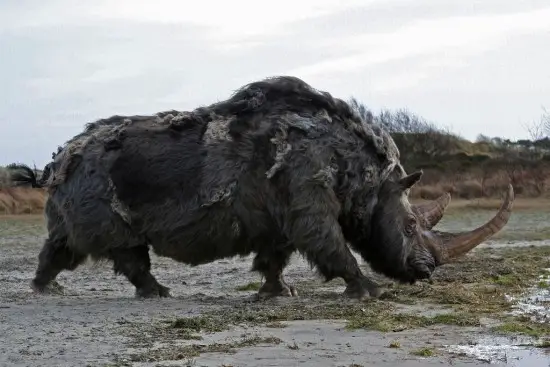The woolly rhinoceros (Coelodonta antiquitatis) believed to be around for thousands of years. It had even existed during the Ice Age. The woolly rhino is now extinct but the animal once lived in the northern Asia and Europe. Scientists have found the remains of woolly rhino from the U.K., Kamchatka, and other parts of Eurasia.
Woolly Rhino Facts
Anatomy
- We do not know much about the physical appearance of woolly rhinos but there are a few cave paintings in Siberia that tells us about it.
- The adult rhino weighed up to 1,800–2,700 kg (4,000–6,000 lb).
- It grew to the length of about 3 to 3.8 meters (9.8 to 12.5 ft) with the shoulder height measuring at 2 m (6.6 ft). The woolly rhino was believed to be relatively larger than the white rhinos.
- The animal had short thick legs with stocky body.
- The only living representation of woolly rhino is Sumatran rhinoceros.
Behavior
- The woolly rhinos had used its horns to defend against the then predators or probably to attract mates.
- It had roamed the northern Europe as well as the arid desert of southern England. The thick skin of rhino allowed it to survive in extreme cold climates.
- They might have lived side by side with woolly mammoths.
Read More: What Do Rhinos Eat in the Wild?

Feeding Ecology & Diet
- The woolly rhinos were regular grazers and browsers. Their diet might have included grasses, shrubby sprouts, mosses, lichens, sedges, and small herbaceous plants.
- According to recent studies, woolly rhinos could have relied on forbs such as Artemisia and graminoids.






Leave a Reply